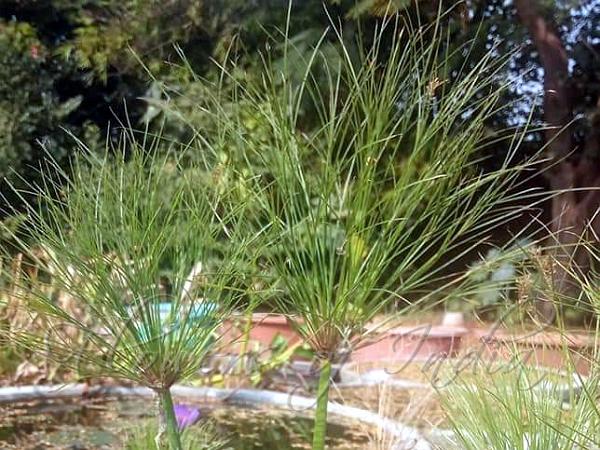|
| Papyrus |
|

|

|
|
|
|
Photo: |
Botanical name: Cyperus papyrus Family: Cyperaceae (Sedge family)
Synonyms: Chlorocyperus papyrus
Synonyms: Chlorocyperus papyrus
Papyrus is a tall, robust aquatic plant can grow 4-5 m
high. It forms a grass-like clump of triangular green stems that rise
up from thick, woody rhizomes. Each stem is topped by a dense cluster
of thin, bright green, thread-like rays around 10 to 30 cm long,
resembling a feather duster when the plant is young. Greenish-brown
flower clusters eventually appear at the ends of the rays, giving way
to brown, nut-like fruits. In Ancient Egypt, papyrus was used for
various of purposes such as baskets, sandals, blankets, medicine,
incense, and boats. The woody root was used to make bowls and utensils,
and was burned for fuel. The Papyrus Ebers refers to the use of soft
papyrus tampons by Egyptian women in the 15th century BCE. Egyptians
made efficient use of all parts of the plant. Papyrus was an important
"gift of the Nile" which is still preserved and perpetuated in Egyptian
culture. Papyrus is native to Africa, widely cultivated elsewhere.
| Identification credit: Mukul Pandya | Photographed in Nature's Nest Biodiversity Park, Agra, Uttar Pradesh. |
• Is this flower misidentified? If yes,